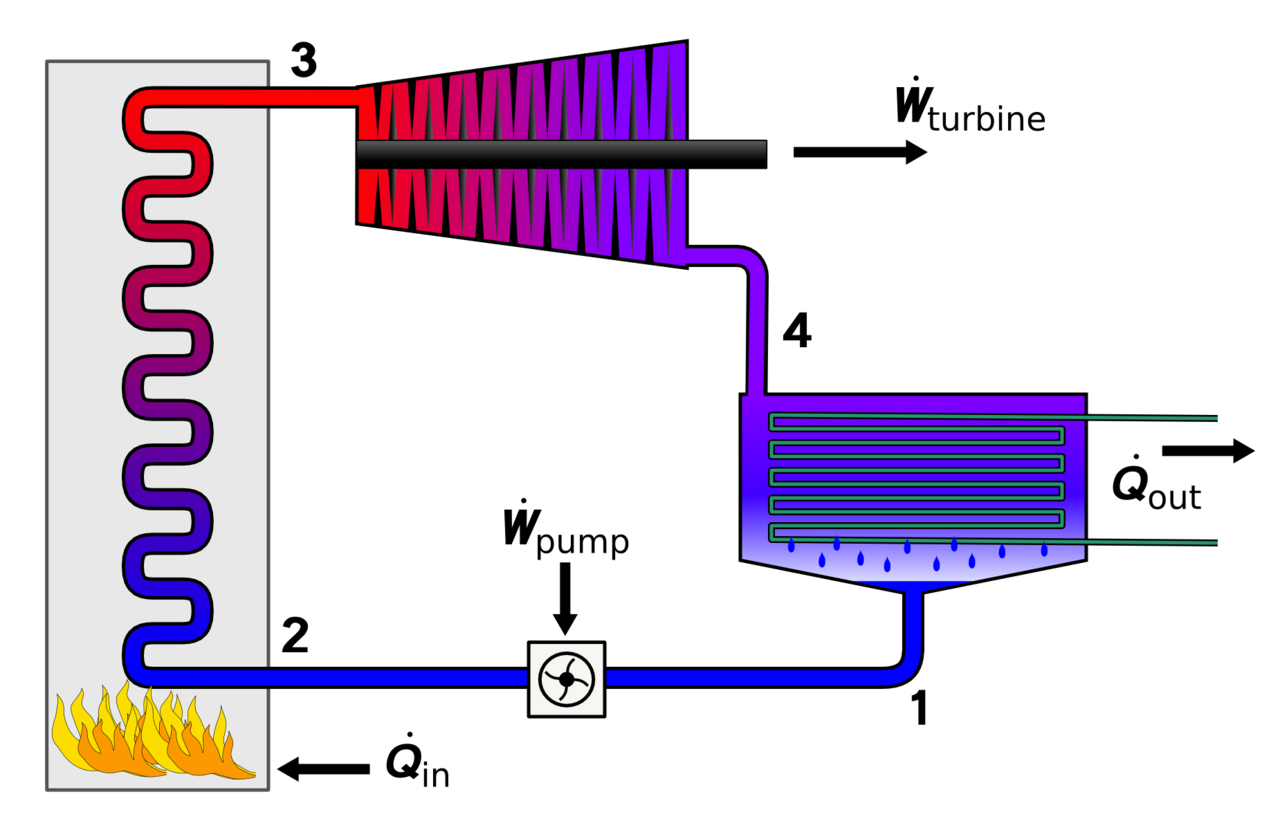Rankine cycle

Regenerative Rankine cycle

Heat engine cycles
Heat engines produce useful work by allowing heat to move from a hot reservoir to a cold reservoir. Examples of heat engines are the steam and gas turbines in power plants and internal combustion engines powering vehicles. The cold reservoir is usually the environment, so the efficiency of the cycle is measured as the fraction of the heat coming from the hot reservoir converted to work:
If the hot and cold reservoirs have well-defined temperatures, then the maximum efficiency that can be achieved is given by Carnot's efficiency:
Provided that we operate between two such fixed temperature reservoirs, a measure of how good the cycle design is, is the second law efficiency:
Rankine cycle

Rankine cycle
Rankine cycle is used to produce power in virtually all coal power plants and other plants using steam turbines to power generators. It consists of four steps:
- The cold liquid water is pumped to high pressure using a liquid pump. Because liquids are nearly incompressible, the work required for the pumping is rather small
- The water enters a boiler where it is heated (by burning coal, etc.). The water evaporates and the steam is typically superheated (both processes occuring at constant pressure) so that the steam is well away from the two-phase region (dry steam)
- The hot, high-pressure steam is expanded through a turbine, isentropically (in an ideal cycle), and part of the steam enthalpy is converted to work. At the outlet, wet steam (two-phase mixture, mostly steam) at low pressure exits the turbine.
- The wet steam enters the condenser, gives off heat to the environment and is reliquefied before being pumped again.
Regenerative Rankine cycle

Regenerative Rankine cycle
In this variation of the Rankine cycle, a counterflow heat exchanger (recuperator) is placed between:
- the pump and the boiler, on one hand,
- the turbine and the condenser, on the other hand
The steam exiting the turbine is still rather hot. Some of its enthalpy can be used to pre-heat the water entering the boiler, before it is wasted by rejecting it to the surroundings. This reduces the amount of heat necessary to produce the steam, and therefore increases the efficiency of the cycle.
